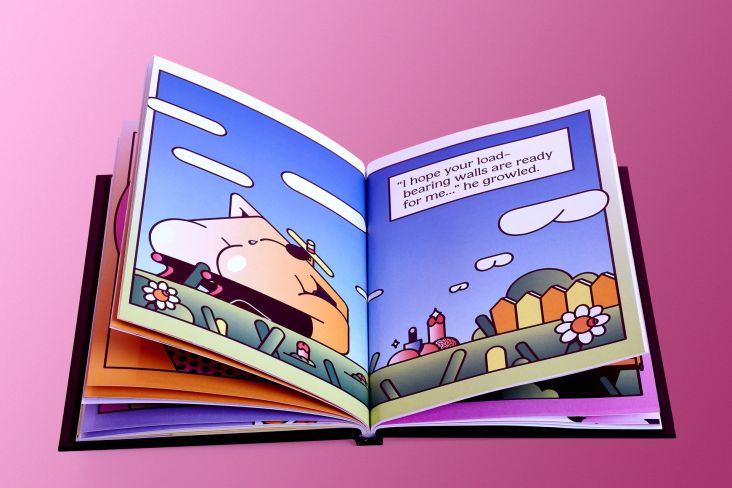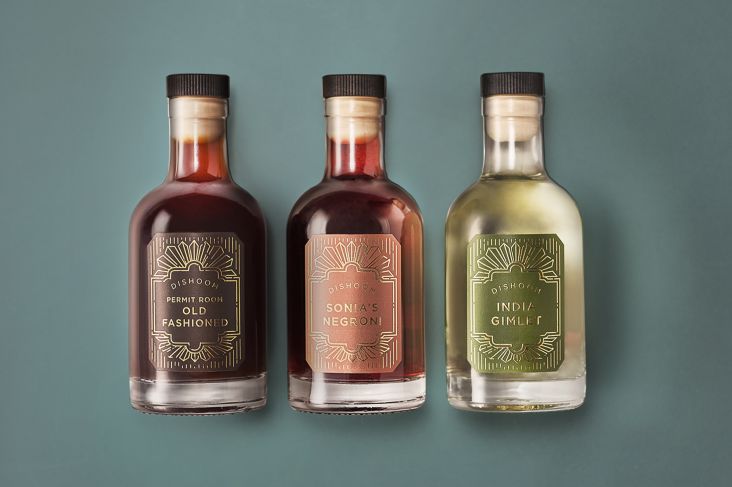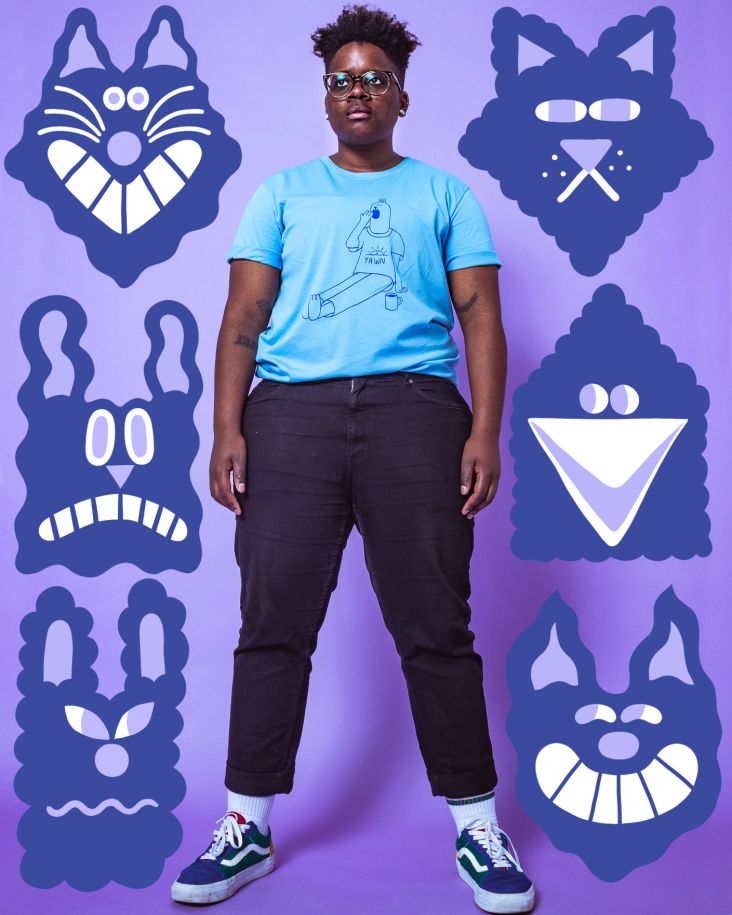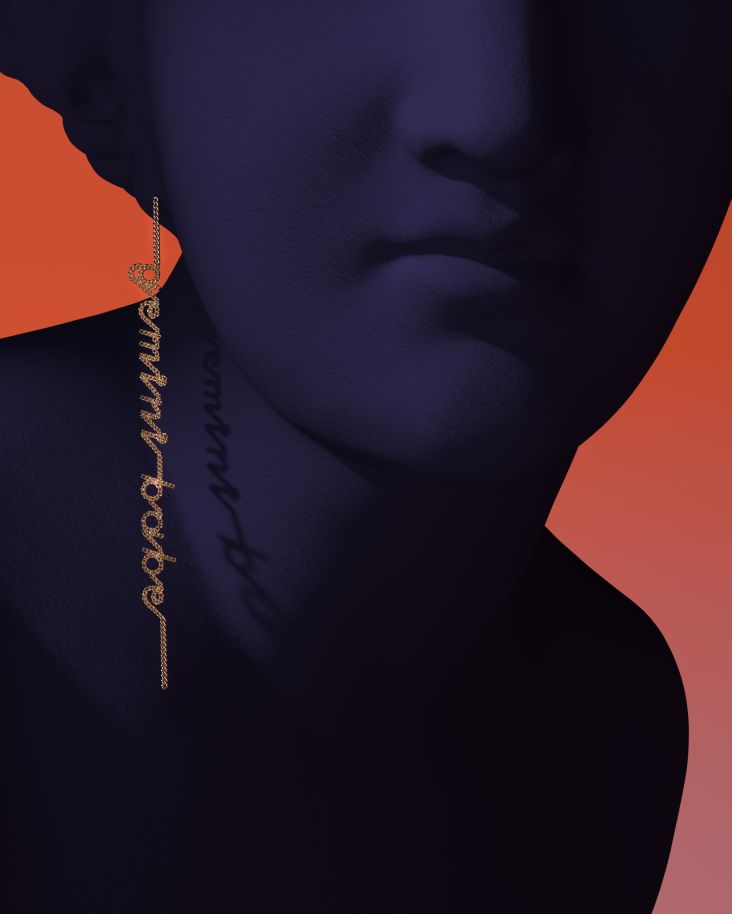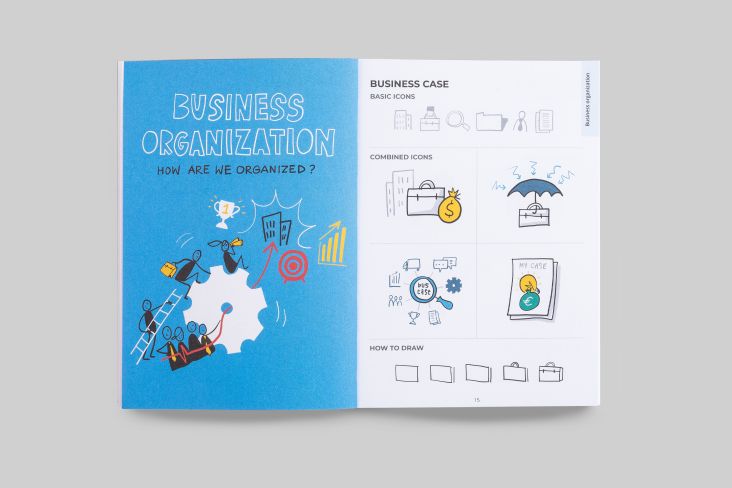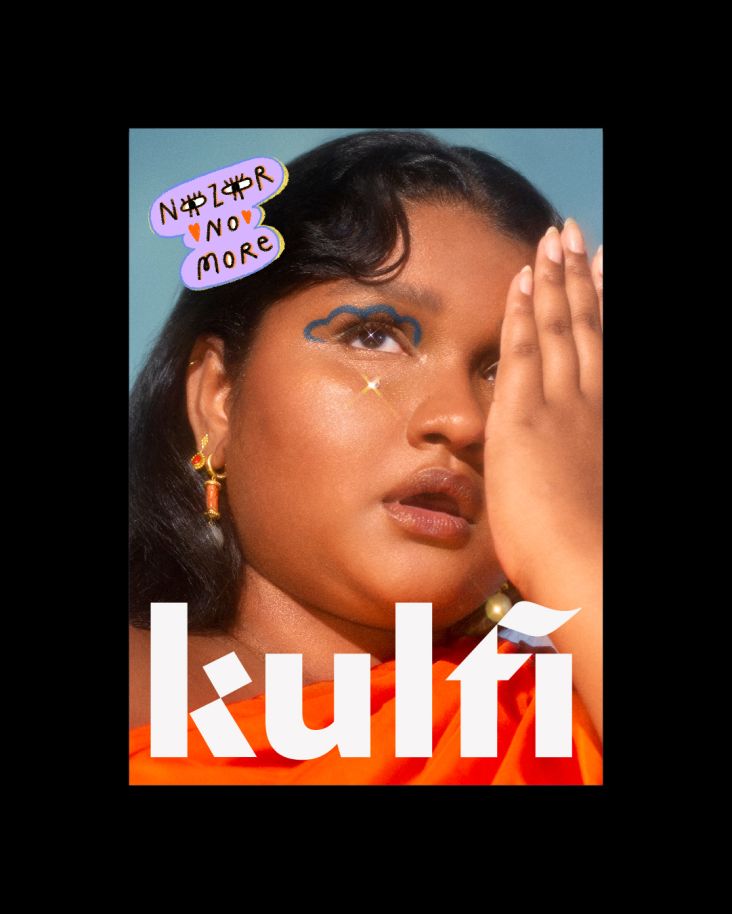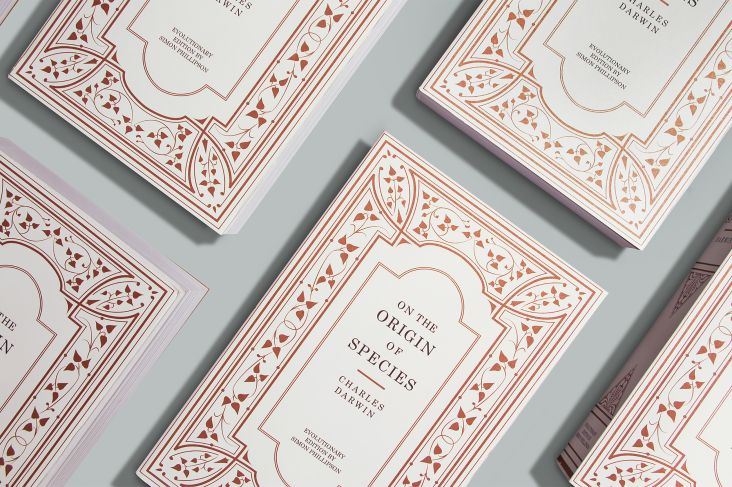Mother Design MD Kathryn Jubrail on post-pandemic design trends, 'kitchen table' agency culture and more
London-based branding and design studio Mother Design has a well-deserved name for itself as not just a big-name agency working with big-name clients, but as somewhere that takes its maternal moniker seriously.
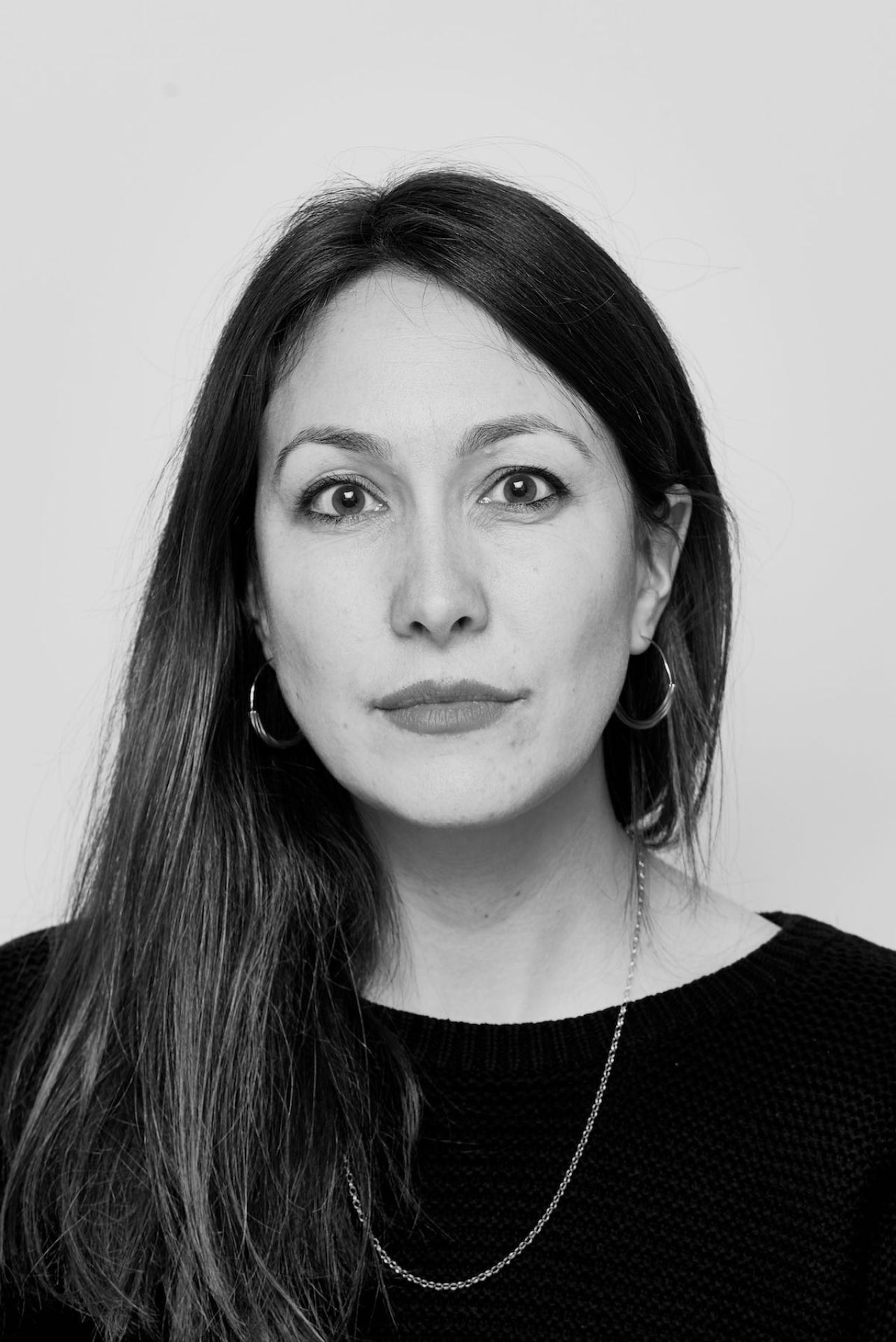
Kathryn Jubrail
As part of the 'Mother Family' of worldwide agencies founded in 1996, its roots of being founded round kitchen table still ring true today in its approach to collaboration between clients and colleagues.
Over recent years, Mother Design has worked with Facebook, Nike, TripAdvisor, flowers brand Bloom& Wild and many more.
Kathryn Jubrail, managing director at Mother Design, joined the team early last year, having previously worked as a managing partner at fashion and lifestyle agency, Odd. She came to Mother just six weeks before the lockdown was brought in, so we talked with her about the studio's approach, how it's adapted to remote working and lots more.
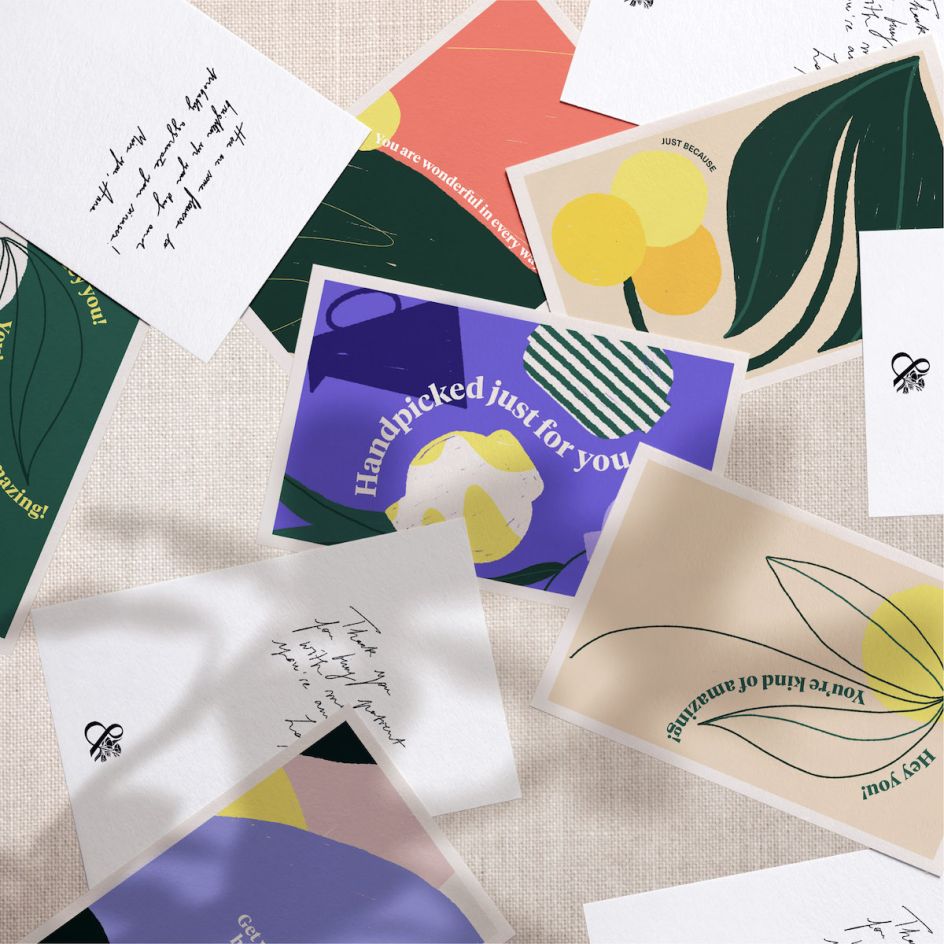
Mother Design, work for Bloom&Wild
How's Mother Design been adapting to working from home in the pandemic?
There's an acute awareness that our current way of living and working probably isn't the best from a mental health perspective, so there was a concerted effort to manage this to make sure that we support and look after people's mental health. I'm sure lots of agencies have found the same, but working from home felt like it led to a nine till six zoom environment, so we purposefully carved out time in the day on Wednesday Mornings and Friday afternoons, where you're not attached to your laptop, or on the end of a video call.
The intention of these times is to give people a bit of headspace; be that they go for a run, a walk around the block, spend the morning getting lost in favourite design blogs, it doesn't matter what it is, as long as it gives some breathing space. We also fiercely protect the lunch break every day, where meetings can't go in, likewise to give some breathing space, as lunch breaks are supposed to be for eating – not working.
Alongside carving out diary time, we also have an incredible well-being team within Mother that looks after our bodies and minds, with weekly guest speakers talking to us about being aware of our mental and physical health and dealing with stress, financial well-being, nutrition, desk yoga sessions, life drawing, gong baths and pilates, all geared around making sure that we feel supported and inspired.
It probably gives it away by the name, but Mother is incredible in terms of its attitude towards parents. There's an awareness at the leadership level around looking after people and being conscious of situations they're in and adapting appropriately, as it's not just their problem to solve, it's our problem to solve together.
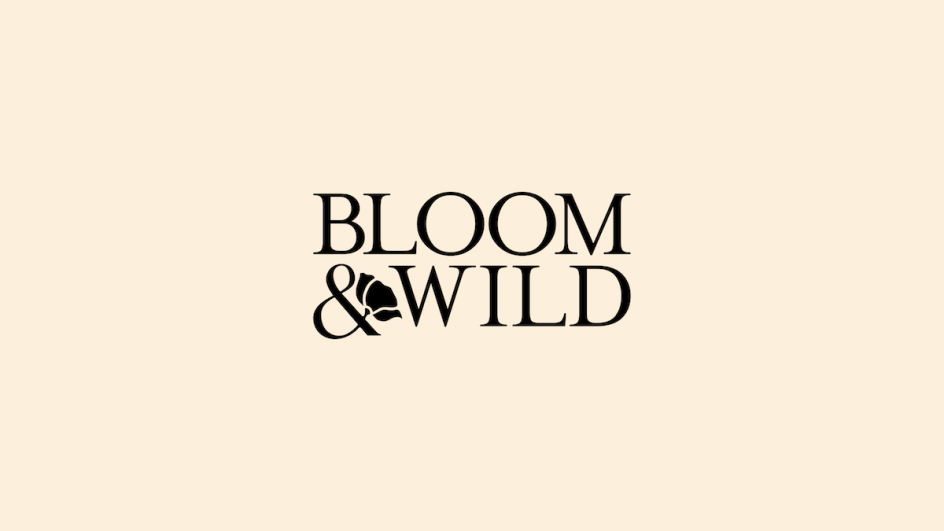
Mother Design, work for Bloom&Wild
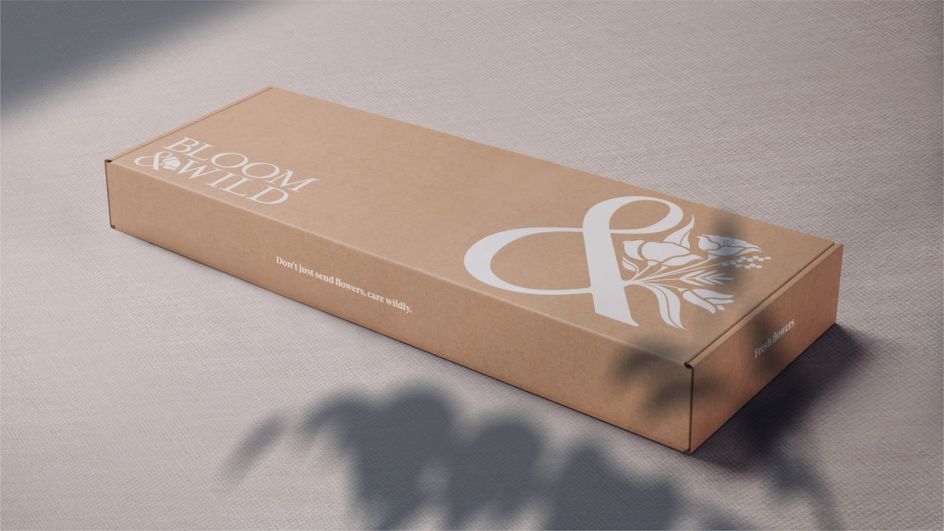
Mother Design, work for Bloom&Wild
From your experience in the ad industry generally, is the cliché around very long hours, high pressure, "I want this yesterday!" and so on true?
There definitely is a faster, quicker, mentality which I don't think is restricted to our industry; it is the responsibility of the leaders within businesses to figure out how they can manage that without it just being passed onto the employees to do more constantly.
Of course, there is a reality of deadlines (and the intensity that brings) which on the one hand does galvanise everyone, but the key thing from a management point of view is making sure that they are one-offs, rather than a style of working.
How did you get into what you do originally? What did you study?
I sort of fell into it. I actually studied social anthropology, and I loved it so much I had, I just really love understanding people and culture. Being able to decode that and apply those learnings with the added benefit of having a creative output felt like a really good fit. I started working at a comms agency out of uni; then I started as a junior strategist. I threw myself into being one of the pitch planners at my first agency, knowing that I would get exposure to many different types of briefs and clients and problems. It felt almost like I squeezed five years of experience into two years in terms of the breadth of the projects I was working on, and the teams internally that I was working with, and that gave me an incredible foundation in terms of being able to figure out what I liked doing and what I enjoyed.
When I move jobs, I always ask myself, am I learning? Am I being challenged? Do I love the role I'm in? Whichever field you're in, work takes up a big part of your life—your physical time and your mental time. So I've always sort of constantly had those things in the back of my mind. I've worked at Iris, DDBAdam&Eve; I went client-side at ITV… Working client-side is amazing because you genuinely get a sense of the pressures that they're under: I think sometimes agency side, you can be naive to the realities. When I started at Odd, I built the strategy team from just me to six people when I left. I was appointed on the board, and I really enjoyed the responsibility of shaping where the business was going. I moved to New York for a year and opened up our New York office, and then I got pregnant and decided to come back to London to have my son.
My move to Mother Design was driven by similar factors to all my moves; I fell for the people I met and was inspired by them and the culture at Mother Design and the opportunity itself to lead Mother Design both excited and terrified me in equally satisfying measures, which is always a good sign! The environment and culture that underpins the Mother family mean that Kirsty (the ECD and co-leader of Mother Design) and I have the most incredible opportunity together to build a branding agency that feels relevant and modern to today, where creative solutions (to the client and cultural problems) can intersect fluidly across design (in a graphic, experience, interior and product sense) and communications.
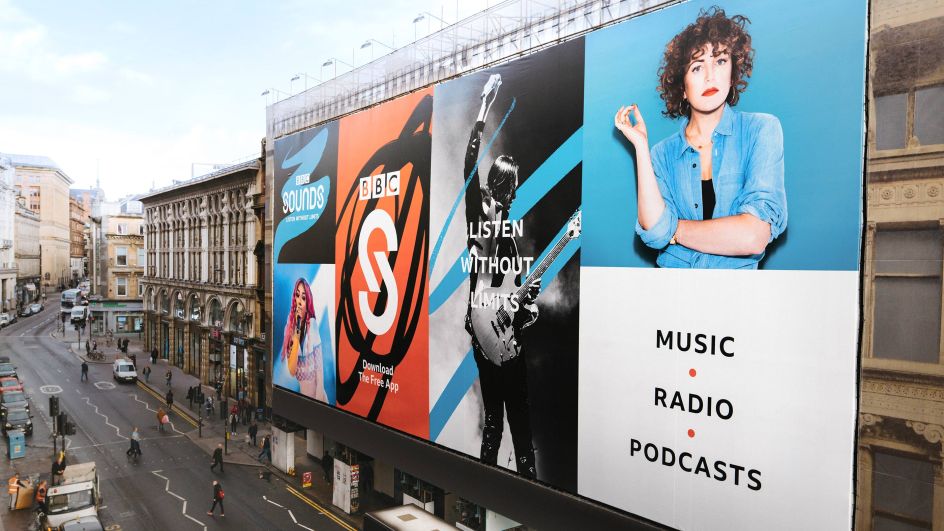
Mother Design, work for BBC Sounds
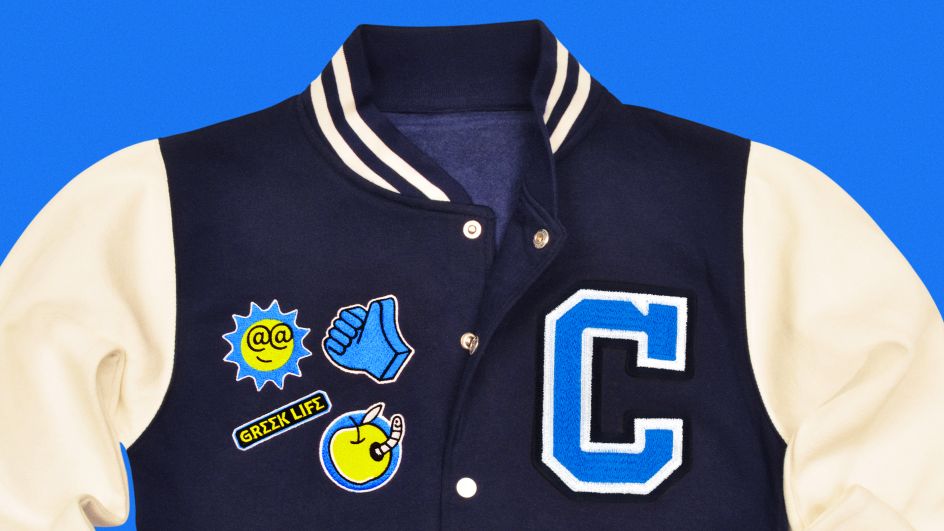
Mother Design, work for Facebook Campus
What would be a project that really exemplifies Mother Design's approach, and what you do?
We talk about specialising in not specialising, which means we have a really diverse set of clients, where we don't have a house style but rather an intent to create the best work we can, across entire internal eco-systems as well as external consumer touchpoints.
So while our output might differ per project, what stays consistent is how it feels to work with us and our ambition driving the project throughout to create the best work we can.
Collaboration is at the core of our DNA, although I know every agency claims that, it is core to our DNA. Not only a value in our culture but also part of our physical environment to facilitate it; where Mother Design sits on a singular (very large) round table, and even our breakout spaces and soft seating are incredibly designed round sofas!
It's not just about the design of our office: that attitude around working collaboratively and working as a family with colleagues and also clients is about being comfortable, challenging each other, arguing, falling out, but then still having lunch together like you would your family. That is really key.
We've worked with Facebook for 12 months, and we work in a really integrated way with their internal creative team. It's genuinely crafted collaboratively where we created one blended team to deliver the projects. Likewise, we worked with Bloom&Wild and made sure that during the process there were moments for everyone to come in and for their voices to be heard across the business, which is important because for brands be successful, [the creative] needs to be adopted and lived and breathed by the people that are going to be taking it through from a business; making sure that they have ownership and they've been part of that journey.
We are a design and brand agency, which sits within the Mother Family, made up of design, communications, PR and business incubators. Mother Design straddles all those different units within the Mother family which mean our understanding and practical application of brand design is very real because we're working with people that at the end of the day, do need to apply it.
Our work's got endurance: it will last, it will scale with businesses as they scale, it will flex as they go across different kind of touchpoints because we truly understand how brands need to live in businesses and through communications.
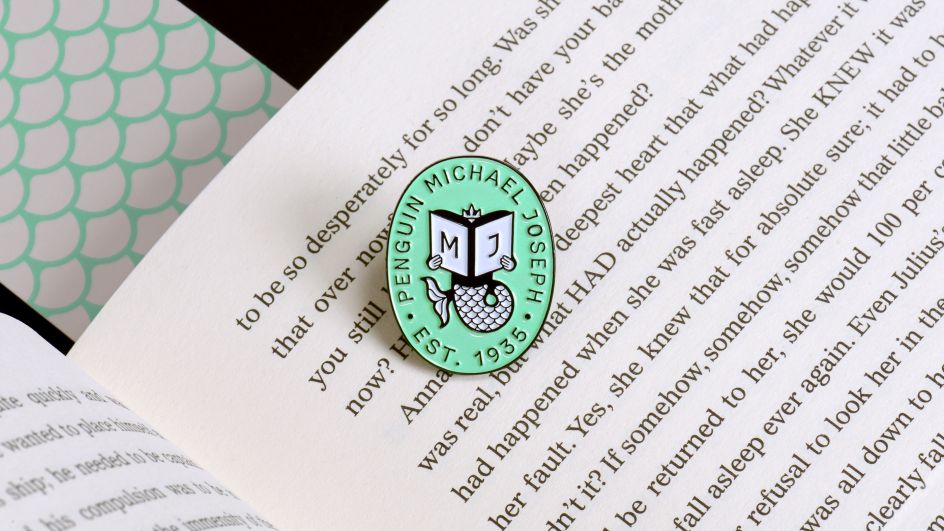
Mother Design, work for Penguin Michael Joseph
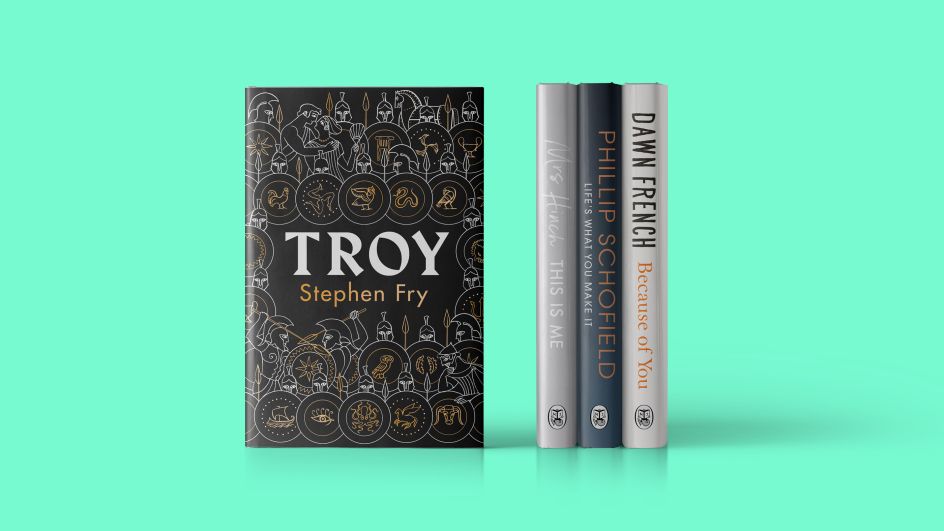
Mother Design, work for Penguin Michael Joseph
Stylistically, would you say there are any obvious trends that you've noticed coming in, or going out, that either clients want or that you feel you want to use more of?
One of the biggest things is the prominence of motion, which almost feels a bit out of date to even say! Motion needs to be an integral part of brands, in the same way, that tone of voice brings personality and meaning to your whole system, motion likewise speaks volumes and tells an additional story which ultimately adds to what a static-only system can offer.
We have something which we call the Holy Trinity, which is essentially a lens we use to evaluate the projects to work on. Can we do the best work? And then the second one is can we have fun doing it, thinking about what the team wants. And the final one is can we make a living (and it's always in that order).
Another thing that has come more to the fore is we're increasingly asking ourselves questions around if it will make the world or our culture/society a better place. When we looked at Mother Design's 2021 business, we have made sure that within our projects, we have a good blend of projects.
From those with incredible creative opportunities to others whose products or services we are excited by and then those where we are able to use our creativity for good. It's not about only working with brands who are sustainable, it's more about understanding the values that that company has, do they align with our values? Is there an intent for them to invest in those areas that they need to work on? Are they acknowledging those with an intent to help change them?
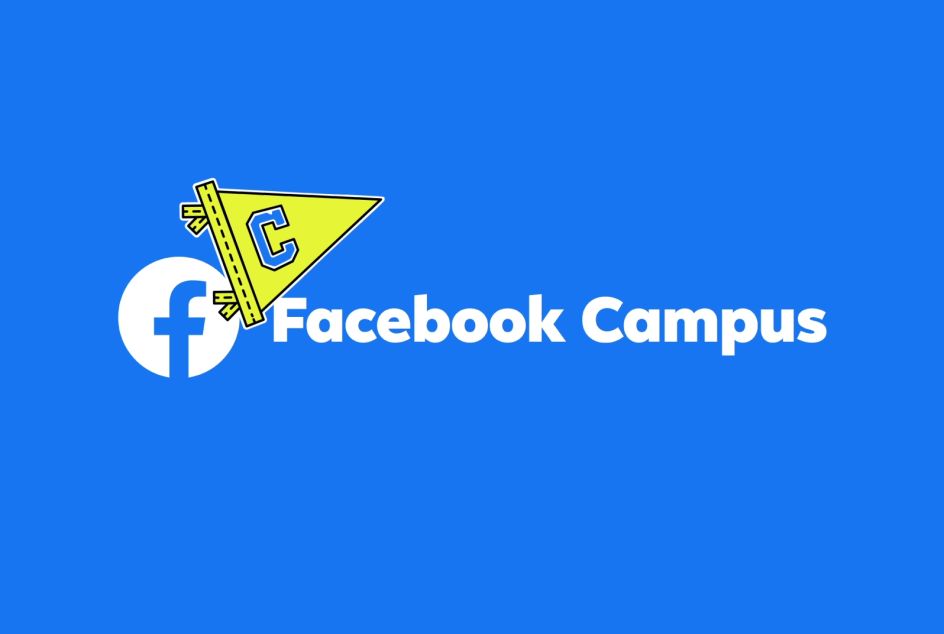
Mother Design, work for Facebook Campus
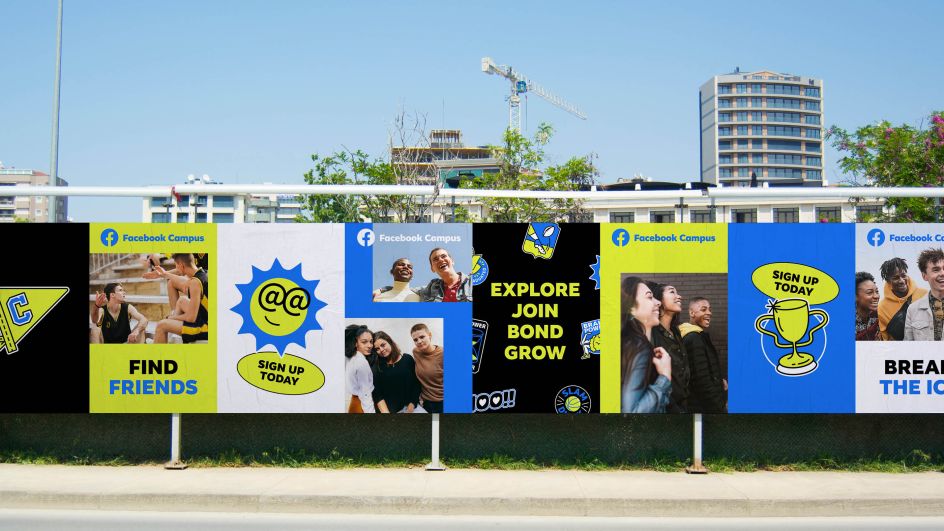
Mother Design, work for Facebook Campus
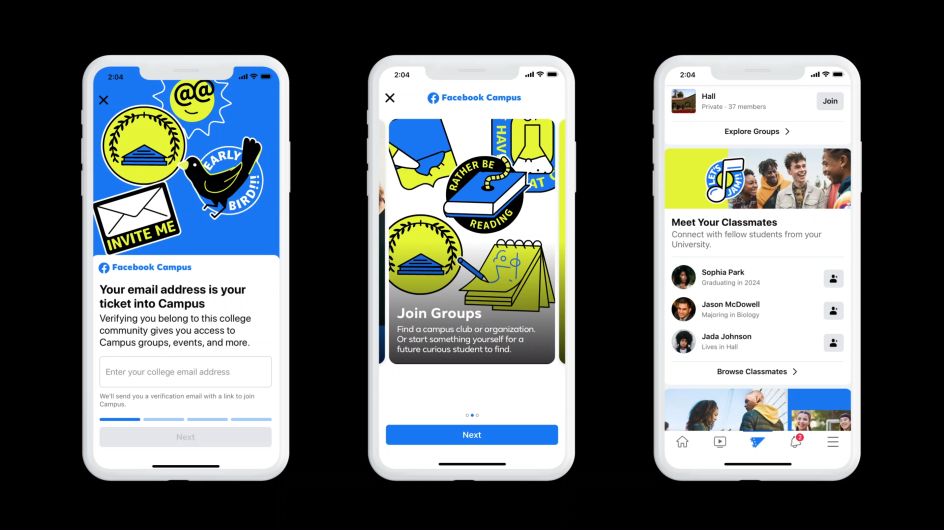
Mother Design, work for Facebook Campus
Are there any recent projects that you're keen to highlight?
Bloom&Wild was a brilliant brief because when you look at the flower category, it was just huge cliches of pink, the way they portrayed women – it just felt so saccharine, and it missed the point around modern femininity from a consumer relevance point of view, and so in terms of the role of giving flowers. Again, it's full of cliches of giving flowers when you're sick, or on Valentine's Day or on birthdays, so it was reframing giving the gift of flowers as a token of care between two people. And it's sort of a note that says "I'm thinking about you", and actually unpacking what care means on a tonal spectrum for Bloom&Wild. How do we paint a more modern representation of femininity? The categories are driven by a female audience, and pink is a standard colour across the category.
We had to get across that sense of care, but also strength and confidence and humour. People are multifaceted. So we had to create a brand that has got those tension points in it, where we can both be both strong and competent, but also feel warm and caring. I think it's a really good example of how you can solve a brief when you blend comms and design together: I think there's a really strong response because how people react to something isn't just the message you put out, it's also the whole feel of that message, which is fundamentally the design of the brand.
Not only was this a project which looks at branding, but we also worked in collaboration with OTHER who developed an advertising campaign that launched at the same time.
It's about constantly pushing: how do we make this brand actually distinctive, and relevant and true to the community it serves, rather than look like everyone else in that sector?
Have you noticed the kind of briefs you're getting or the kind of clients that are approaching you have changed over the last year?
In 2020 we had a lot of tech brands contact us. I suppose that's because when you look at performance, they've weathered the economic storm better. Tech brands are interesting, is it even a bit old fashioned to be calling them 'tech' brands – as does that just mean they are online!
But where those brands really excite me is where they have managed to create a seamless brand experience across the on and offline. How do you build a brand that predominantly lives in digital in a way which feels exciting without any tactility? How do you build experiences in digital, versus when you have a physical product? Or when you've got a brand experience which immerses you in their values, how do you replicate some of that into an online experience?
Some of the subscription brands have it nailed, where the online experience offers ease and function and then the product arrives on your doorstep, and every part of it has been crafted when you get it in your hands, and it feels anything but a generic amazon delivery! Those brands are the ones that inspire me, the ones who can make me feel engaged both online but also when the product gets into my hand, and the storytelling continues and deepens.
One thing which we try and really interrogate is distinctiveness and being mindful of performance and effectiveness. If you look at the industry at the moment, there is a real tone of voice and aesthetic that feels like it's being driven by the smaller brands, which was refreshing when it first came out. But you're now seeing that being across a lot of other brands. It's about constantly pushing: how do we make this brand actually distinctive, and relevant and true to the community it serves, rather than look like everyone else in that sector?
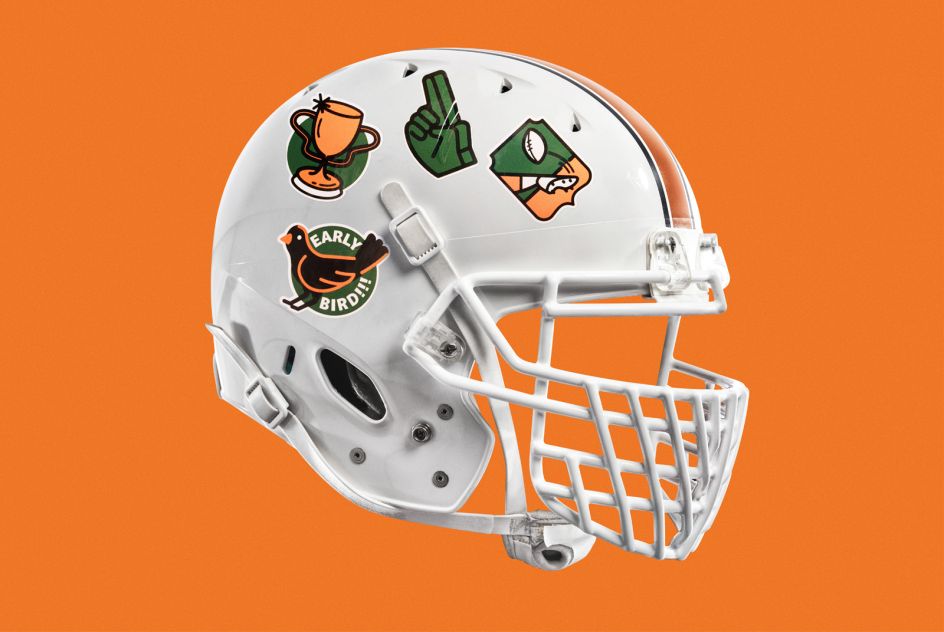
Mother Design, work for Facebook Campus




 by Tüpokompanii](https://www.creativeboom.com/upload/articles/58/58684538770fb5b428dc1882f7a732f153500153_732.jpg)


 using <a href="https://www.ohnotype.co/fonts/obviously" target="_blank">Obviously</a> by Oh No Type Co., Art Director, Brand & Creative—Spotify](https://www.creativeboom.com/upload/articles/6e/6ed31eddc26fa563f213fc76d6993dab9231ffe4_732.jpg)








